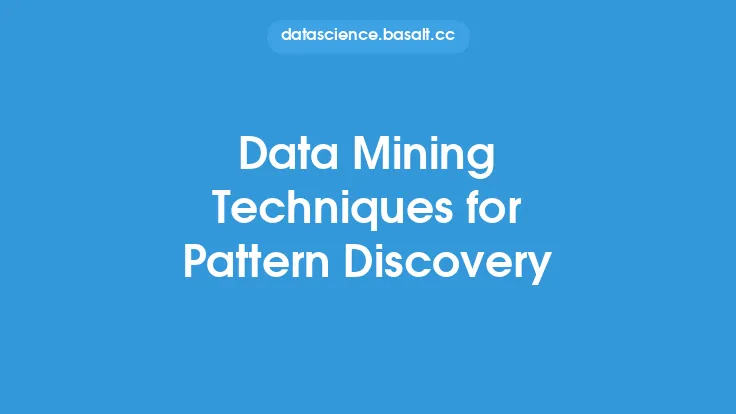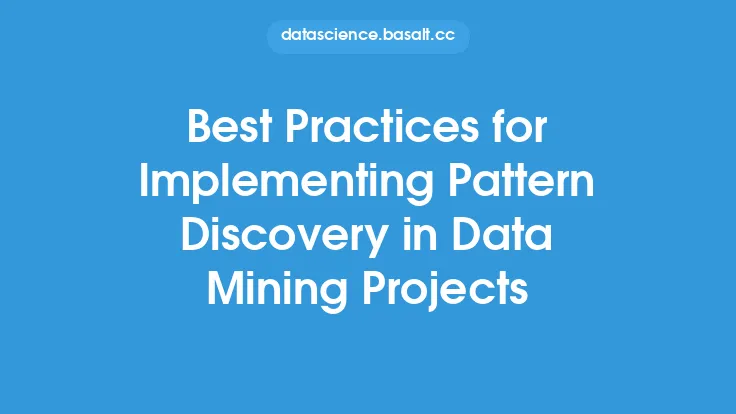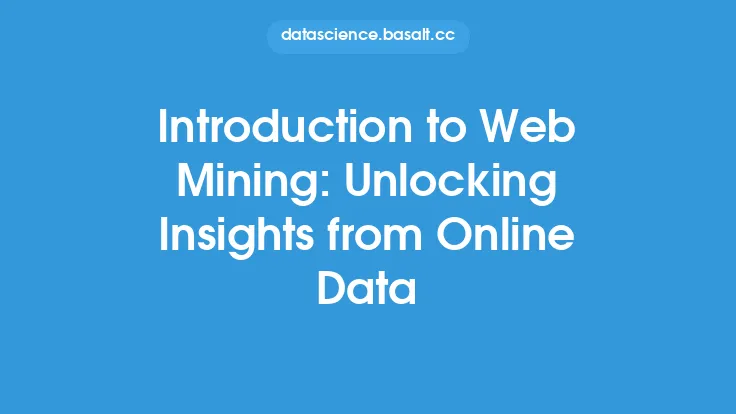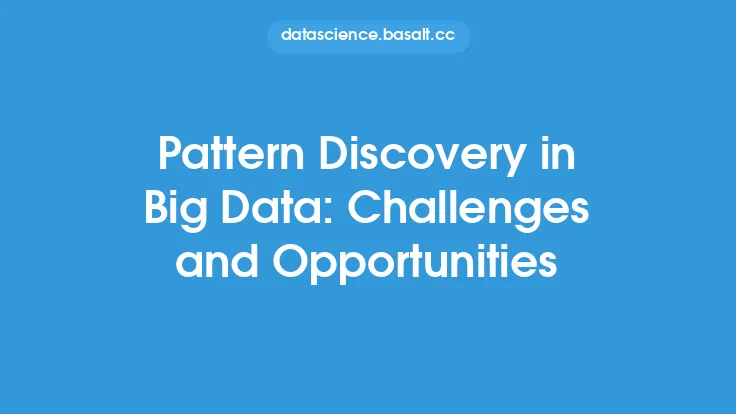Data mining is the process of automatically discovering patterns and relationships in large datasets, and pattern discovery is a crucial aspect of this process. It involves using various techniques and algorithms to identify meaningful patterns, trends, and correlations within data. Pattern discovery is a fundamental concept in data mining, as it enables organizations to extract valuable insights from their data, make informed decisions, and gain a competitive advantage.
What is Pattern Discovery?
Pattern discovery is the process of identifying patterns, trends, and correlations within data. It involves using various techniques, such as statistical analysis, data visualization, and machine learning algorithms, to uncover hidden relationships and patterns in the data. Pattern discovery can be applied to various types of data, including structured, semi-structured, and unstructured data. The goal of pattern discovery is to identify patterns that are meaningful, useful, and relevant to the organization or business.
Key Concepts in Pattern Discovery
There are several key concepts in pattern discovery that are essential to understanding the process. These include:
- Pattern: A pattern is a recurring relationship or trend in the data. Patterns can be simple or complex, and they can be identified using various techniques, such as statistical analysis or machine learning algorithms.
- Data quality: Data quality is critical in pattern discovery, as poor-quality data can lead to inaccurate or misleading results. Data quality issues, such as missing or duplicate values, must be addressed before applying pattern discovery techniques.
- Data preprocessing: Data preprocessing is the process of preparing the data for pattern discovery. This includes cleaning, transforming, and formatting the data to ensure that it is in a suitable format for analysis.
- Pattern evaluation: Pattern evaluation is the process of assessing the quality and relevance of the patterns discovered. This includes evaluating the accuracy, completeness, and consistency of the patterns, as well as their potential impact on the organization or business.
Techniques Used in Pattern Discovery
There are several techniques used in pattern discovery, including:
- Statistical analysis: Statistical analysis involves using statistical methods, such as regression analysis and hypothesis testing, to identify patterns and trends in the data.
- Data visualization: Data visualization involves using graphical representations, such as charts and graphs, to visualize the data and identify patterns and trends.
- Machine learning algorithms: Machine learning algorithms, such as decision trees and clustering algorithms, can be used to identify complex patterns and relationships in the data.
- Text mining: Text mining involves using techniques, such as natural language processing and information retrieval, to extract patterns and insights from unstructured text data.
Benefits of Pattern Discovery
Pattern discovery has several benefits, including:
- Improved decision making: Pattern discovery can provide organizations with valuable insights and knowledge, enabling them to make informed decisions and drive business success.
- Competitive advantage: Pattern discovery can help organizations to identify new opportunities and threats, enabling them to stay ahead of the competition.
- Increased efficiency: Pattern discovery can help organizations to streamline their operations and improve their efficiency, by identifying areas where processes can be improved or optimized.
- Enhanced customer experience: Pattern discovery can help organizations to better understand their customers' needs and preferences, enabling them to provide a more personalized and effective service.
Challenges in Pattern Discovery
Despite the benefits of pattern discovery, there are several challenges that organizations may face, including:
- Data quality issues: Poor-quality data can lead to inaccurate or misleading results, making it essential to ensure that the data is accurate, complete, and consistent.
- Complexity of data: Large and complex datasets can be difficult to analyze, requiring specialized skills and techniques to uncover meaningful patterns and insights.
- Interpretation of results: The results of pattern discovery can be difficult to interpret, requiring specialized knowledge and expertise to understand the implications and potential applications of the patterns discovered.
- Ethical considerations: Pattern discovery raises several ethical considerations, including privacy and security concerns, which must be addressed to ensure that the organization is using the data in a responsible and ethical manner.
Real-World Applications of Pattern Discovery
Pattern discovery has numerous real-world applications, including:
- Customer segmentation: Pattern discovery can be used to segment customers based on their demographics, behavior, and preferences, enabling organizations to provide a more personalized and effective service.
- Fraud detection: Pattern discovery can be used to identify patterns of fraudulent behavior, enabling organizations to detect and prevent fraud.
- Predictive maintenance: Pattern discovery can be used to predict when equipment is likely to fail, enabling organizations to schedule maintenance and minimize downtime.
- Recommendation systems: Pattern discovery can be used to build recommendation systems, which suggest products or services based on a customer's past behavior and preferences.
Conclusion
Pattern discovery is a powerful technique that can help organizations to extract valuable insights and knowledge from their data. By using various techniques, such as statistical analysis, data visualization, and machine learning algorithms, organizations can identify meaningful patterns and trends in their data, and make informed decisions to drive business success. However, pattern discovery also raises several challenges, including data quality issues, complexity of data, interpretation of results, and ethical considerations, which must be addressed to ensure that the organization is using the data in a responsible and ethical manner.





